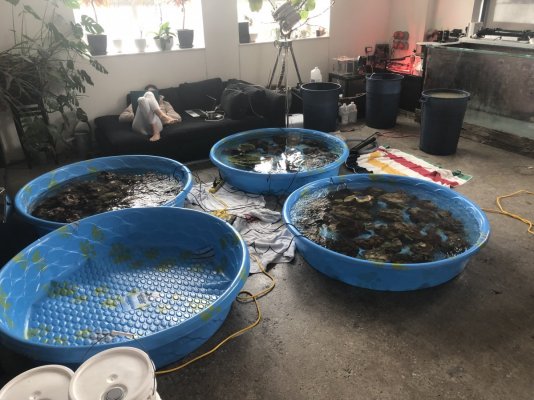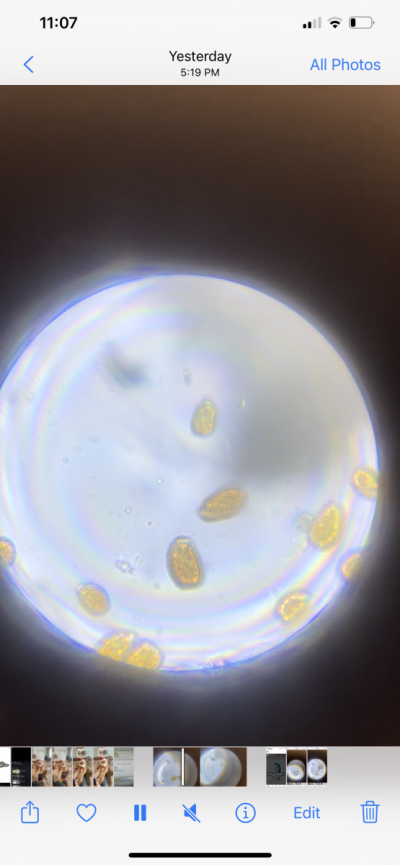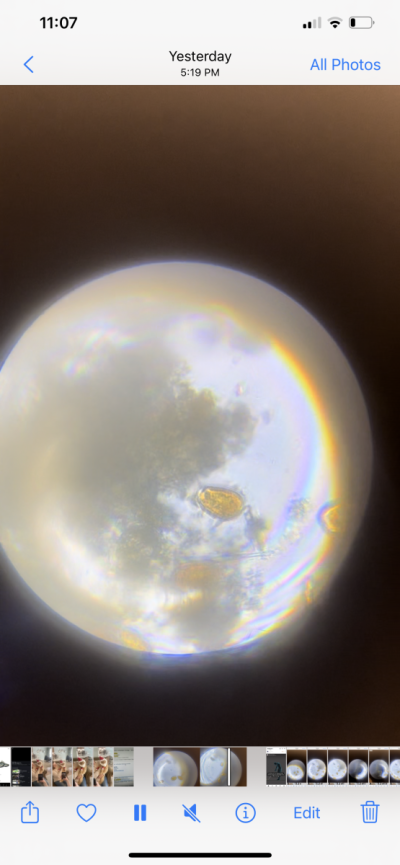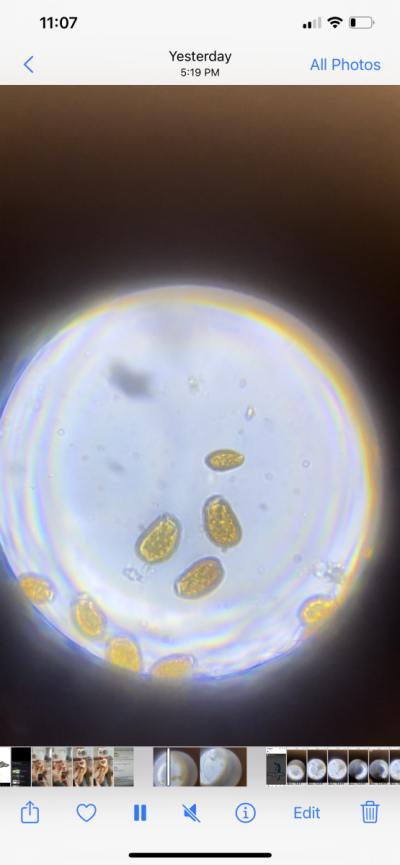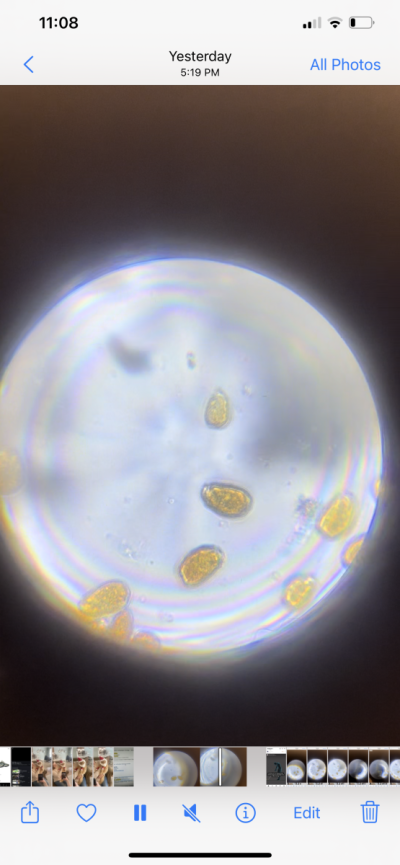I just ordered the Spectrapure double DI system to add after my RO system. Thanks for the recommendation.Diatoms are good in my book, at least compared to dinos. I would try to get zero TDS however. Mostly to remove things that we don’t measure.
I am a fan of Spectrapure systems. A double DI that piggybacks after the RO would be great. More $$ up front, but lower total operating costs IME.
Good luck.
Navigation
Install the app
How to install the app on iOS
Follow along with the video below to see how to install our site as a web app on your home screen.
Note: This feature may not be available in some browsers.
More options
You are using an out of date browser. It may not display this or other websites correctly.
You should upgrade or use an alternative browser.
You should upgrade or use an alternative browser.
My Dinoflagellate Experience - Prorocentrum
- Thread starter JayinToronto
- Start date
- Tagged users None
Is this one of those that separates the cation/anion DI resins like the BRS add-on does?I just ordered the Spectrapure double DI system to add after my RO system. Thanks for the recommendation.
I recently added the BRS version, as I was churning through mixed bed DI resin (in a single canister) at an alarming rate. Will see if it helps.
Yes, it appears so. On the SpectraPure website there is a pretty good description of how they work and how the life of the resin can be calculated (based on the TDS of the input water). https://spectrapure.com/pages/deionizationIs this one of those that separates the cation/anion DI resins like the BRS add-on does?
I recently added the BRS version, as I was churning through mixed bed DI resin (in a single canister) at an alarming rate. Will see if it helps.
I just identified this under a microscope.
to summarize it up, anyone have successful methods tackling this beast? Is this the one that can be beat with UV ?
to summarize it up, anyone have successful methods tackling this beast? Is this the one that can be beat with UV ?
I'd post a pic in the main Dino thread to be sure of the species as they all behave differently.I just identified this under a microscope.
to summarize it up, anyone have successful methods tackling this beast? Is this the one that can be beat with UV ?
My approach was UV, raise nutrients, run carbon for toxin removal and wait. It took quite a while but everything has been stable without a sign of Dinos for quite some time now. I've left the UV plumed into my return system for good as an added safety measure and will never again let my nutrients drop. I sit around around 0.1 and 0.15 phosphate and around 10 nitrates now. SPS and LPS growing well. Here's a link to the main Dino thread.
https://www.reef2reef.com/threads/dinoflagellates-–-are-you-tired-of-battling-altogether.293318/page-532#post-8994966
Sooooooo, after a great run of having a healthy aquarium dinos are back. I have a major disturbance in the aquarium recently where I had to remove all the rock and sand in order fix a leak. Everything had to live in kiddy pools for 3 days. I’ve been watching this brown snot slowly take hold. I was really hoping it was some type of diatom as I also added a couple bags of new sand which is known to contain silica.
Took out the microscope this morning to confirm and found what looks like classic Ostreopsis. In one sample there may even be a mixture. Amphidia perhaps?
I already have a good UV on the system from the last outbreak. Though it does circulate through the sump.
The plan right now is to just observe for a bit. Keep the nutrient up and pray that my healthy bacteria can get back up to speed and take over.
After having to basically start from scratch after the last outbreak I’m not sure if I could keep going in this hobby if I loose most of my corals like last time.
Will update as I go. Wish me luck!
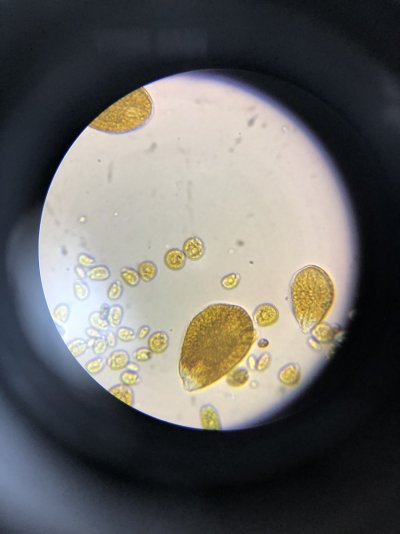
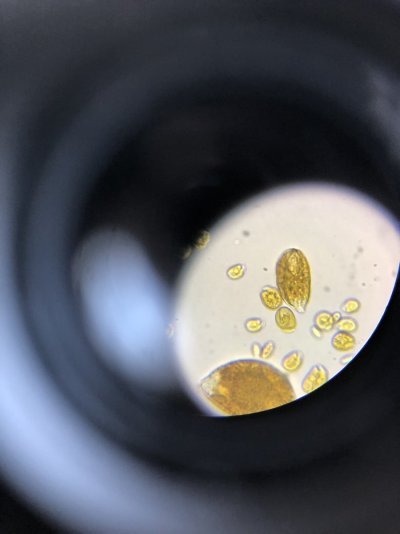
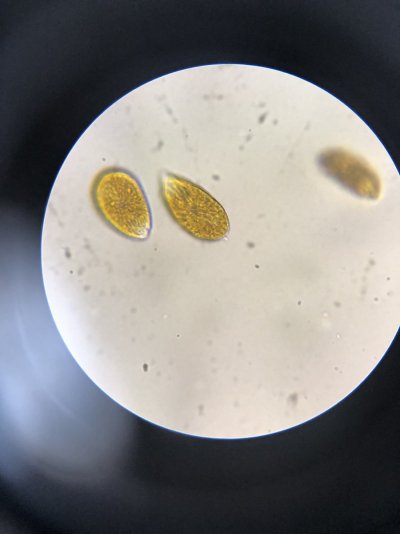
Took out the microscope this morning to confirm and found what looks like classic Ostreopsis. In one sample there may even be a mixture. Amphidia perhaps?
I already have a good UV on the system from the last outbreak. Though it does circulate through the sump.
The plan right now is to just observe for a bit. Keep the nutrient up and pray that my healthy bacteria can get back up to speed and take over.
After having to basically start from scratch after the last outbreak I’m not sure if I could keep going in this hobby if I loose most of my corals like last time.
Will update as I go. Wish me luck!



Definitely ostreos. Not sure about the little guys. Were they swimming around super fast? Could be SC Amphids if so.Sooooooo, after a great run of having a healthy aquarium dinos are back. I have a major disturbance in the aquarium recently where I had to remove all the rock and sand in order fix a leak. Everything had to live in kiddy pools for 3 days. I’ve been watching this brown snot slowly take hold. I was really hoping it was some type of diatom as I also added a couple bags of new sand which is known to contain silica.
Took out the microscope this morning to confirm and found what looks like classic Ostreopsis. In one sample there may even be a mixture. Amphidia perhaps?
I already have a good UV on the system from the last outbreak. Though it does circulate through the sump.
The plan right now is to just observe for a bit. Keep the nutrient up and pray that my healthy bacteria can get back up to speed and take over.
After having to basically start from scratch after the last outbreak I’m not sure if I could keep going in this hobby if I loose most of my corals like last time.
Will update as I go. Wish me luck!



Optimize your UV use. Add another if you have one -- straight from/to the display. You can fasten a bunch of filter floss inside the tank in high light/flow areas. They love to attach to the stuff. Rinse each evening before lights go down.
Run some GAC; these have high toxin levels.
Update. The osteos didn't hang around for very long. Honestly I just took the LAR approach and waited it out as I already had high nutrients and a 90 watt UV on the system. A couple of times I went around the tank and suctioned big clumps off, but mostly just did nothing. I did change my carbon weakly and my filter floss daily.
Ostreos are USUALLY the easiest to deal with. A properly sized UV with slow flow gets it done.Update. The osteos didn't hang around for very long. Honestly I just took the LAR approach and waited it out as I already had high nutrients and a 90 watt UV on the system. A couple of times I went around the tank and suctioned big clumps off, but mostly just did nothing. I did change my carbon weakly and my filter floss daily.
Sorry about the leak. That would be painful in a 30 gallon; in a 350, yuck.
Yea, good times were definitely had!Ostreos are USUALLY the easiest to deal with. A properly sized UV with slow flow gets it done.
Sorry about the leak. That would be painful in a 30 gallon; in a 350, yuck.
Attachments
oh my...Yea, good times were definitely had!
Wife would've had me sleeping in the car all week with that setup in place.
What kind do you think I have?amphidinium, actually.
Attachments
- Joined
- May 22, 2016
- Messages
- 6,545
- Reaction score
- 10,099
large cell amphidiniumWhat kind do you think I have?
Current Tank Info: 400g mixed reef with refugium/sump, Orphek V4 LEDs, Deltec protein skimmer, Ecotech MP40s, phosphate reactor (now off-line), charcoal reactor, Apex controller, 3 part dosing.
My saga started 6 weeks ago. Before heading on vacation at the end of July (six weeks ago) I noticed what I though to be a little Cyanobacteria forming in my aquarium. This was a usual occurrence for me in the summer which always seemed to go away in the fall. My tank is in the main room of a loft and thus receives quite a bit of natural light. This seemed to happen every summer and I always blamed this excess light during these long Canadian summer days as causing my annual cyano blooms. I’ve always ran a fairly low nutrient tank as I believed what most sources in the hobby said. Consequently whenever I had any trouble I always did some large water changes and beefed up my carbon and GFO. Worked for the most part over the years.
This year, before heading away on vacation I decided to “really get on top of things”. I did a large 30% water change, suctioned the detritus out of my sump, suctioned my sand bed, rinsed my Chaeto, and replenished my GFO and Charcoal. Then I hopped on a plane for a 2 week vacation. Literally 2 days later the person coming to feed my tank sent me pics of this “brown stuff that was growing everywhere”. I thought it was just more cyano. I reassured them and told them to reduce the feedings. Of course this only made things worse. By the time I got home the tank was absolutely covered in brown slime. As the guys from my LFS who help maintain my aquarium from time to time when I'm away had seen this in previous years and confidently identified this as a type of Cyano I just assumed it was. When I got home after 2 weeks I went to town battling "Cyano". More water changes, aggressive suctioning and driving down any traces of nitrate and phosphate with a 24h Chaeto fuge cycle.... and yup, you guessed it things only worsened. I was getting nowhere. I was getting desperate. Over the years I strongly believed in the natural approach to dealing with problems and had never added any antibiotics or the like to my system, but I was at my whits end and decided to try Chemiclean for my "cyano". And guess what? It didn't work! During my experience with Chemiclean I posted some pictures of my tank and posted some youtube vids. From this someone said "I think its dinos that you are fighting, not Cyano". They were right. And looking back at pictures of my "summer blooms" I think I've been battling dinos for years and years. Just never this bad.
I bought a microscope and confirmed diagnosis (see below) and subsequently started reading everything I could on Dinos. @mcarroll I can't thank you enough for your thread. It's given me hope!
Thus my approach has been:
-Stop water changes.
-Take GFO off line.
-Change Charcoal frequently (q 5-7 days)
-Add UV sterilization (I first picked up a 12x turbo twist as that was all my LFS had, but have since added a 90 watt high output promax UV sterilized from lifeguard aquatics for a total of 126 watts. The 90 is now hard plumbed into my main return running at 600gph. The TT is running off a second parallel pump at 300gph for a total of just over 2x /h turnover).
-Dose Seachem phosphate and nitrate (this has been a bit of a rollercoaster so far. I started at 30ml / day of each and measured with my Salifert kits each day. After 2 days Nitrate showed a trace but phosphate was still undetectable so I upped it, first to 40, then to 50ml. Finally after 5 days I had my first positive reading of phosphate! I added a total of 120mls before I got my first + reading. I'm now at 5-10 nitrates and approx .5 for phosphates.)
-Daily night time blowing all the dinos into the water column with a powerhead.
Now it's really only been 2 days since I've had my nitrates and phosphates above my goal level and plumbed my UV sterilizers into the system so of coarse I haven't seen any improvment yet. WISH ME LUCK!
And if anyone has any criticism or advice, this is what I'm posting for! Fire away!
Video I posted pre-Chemiclean when I thought I was battling Cyano:
Attached are some pics of the aquarium when this all started as well as some pics of my dinoflagellates looking through my microscope.
Will update regularly.
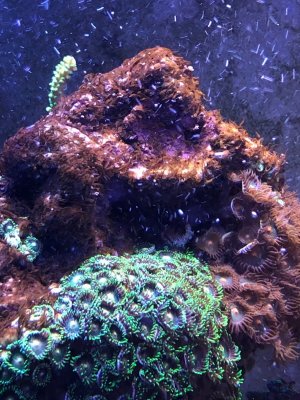
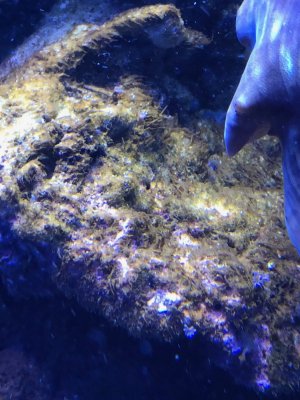
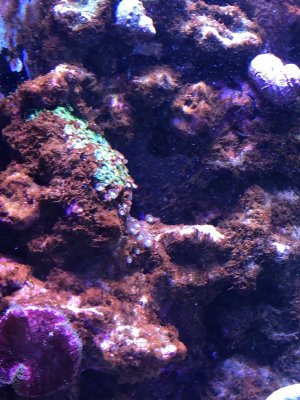
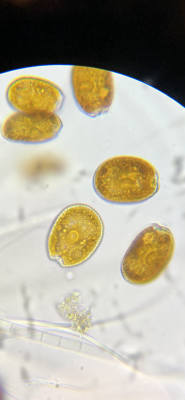
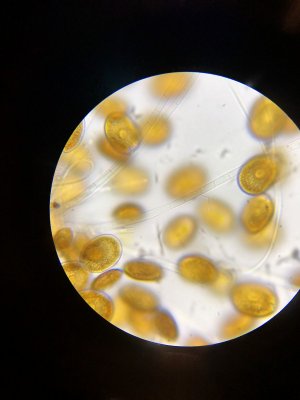
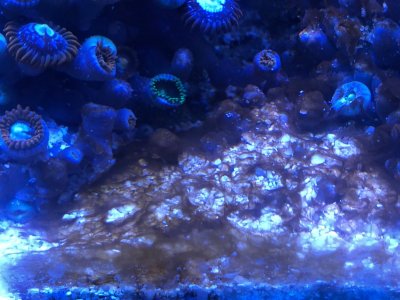
Just went through the same. You'll beat it with these regiments
Thanks Taricha!! What would you suggest that I do to get rid of them?large cell amphidinium
- Joined
- May 22, 2016
- Messages
- 6,545
- Reaction score
- 10,099
Thanks Taricha!! What would you suggest that I do to get rid of them?
See this article by @ScottB to start.
A Dinoflagellate Treatment Guide
As the title suggests, this is intended as a short guide on what to do when you suspect dinoflagellates are trying to overtake your system. It is an attempt to boil down the protocols discussed across 11,000 posts in this "Are you Tired" thread...
 www.reef2reef.com
www.reef2reef.com
Then as you process that, you can read through some of the things that people are doing specifically for amphidinium.
I just recently went through another major tank disturbance and had the dinos come back again. This time is was a tank move. See my build thread. I set up a new system in my house then transferred the old system in totes across town. I left the old sand behind but kept all the coral, rock and water. The good news is that after a couple of weeks of basically ignoring it while keeping my nutrients up I can say that the problem has mostly solved itself. There are still signs of the Dino snot around but nothing that's causing any damage.
A couple things to note. I don't have UV on this new system, but I do have a much better sump setup where all the water has to go through filter floss/sox if I so choose.
as I've been through 2 previous Dino outbreaks before I didn't sweat this at all. I didn't even look under the microscope to confirm identification. I knew what they were, and I felt very confident with the formula.
A couple things to note. I don't have UV on this new system, but I do have a much better sump setup where all the water has to go through filter floss/sox if I so choose.
as I've been through 2 previous Dino outbreaks before I didn't sweat this at all. I didn't even look under the microscope to confirm identification. I knew what they were, and I felt very confident with the formula.
Similar threads
- Replies
- 29
- Views
- 482
- Replies
- 18
- Views
- 290
- Replies
- 2
- Views
- 345







